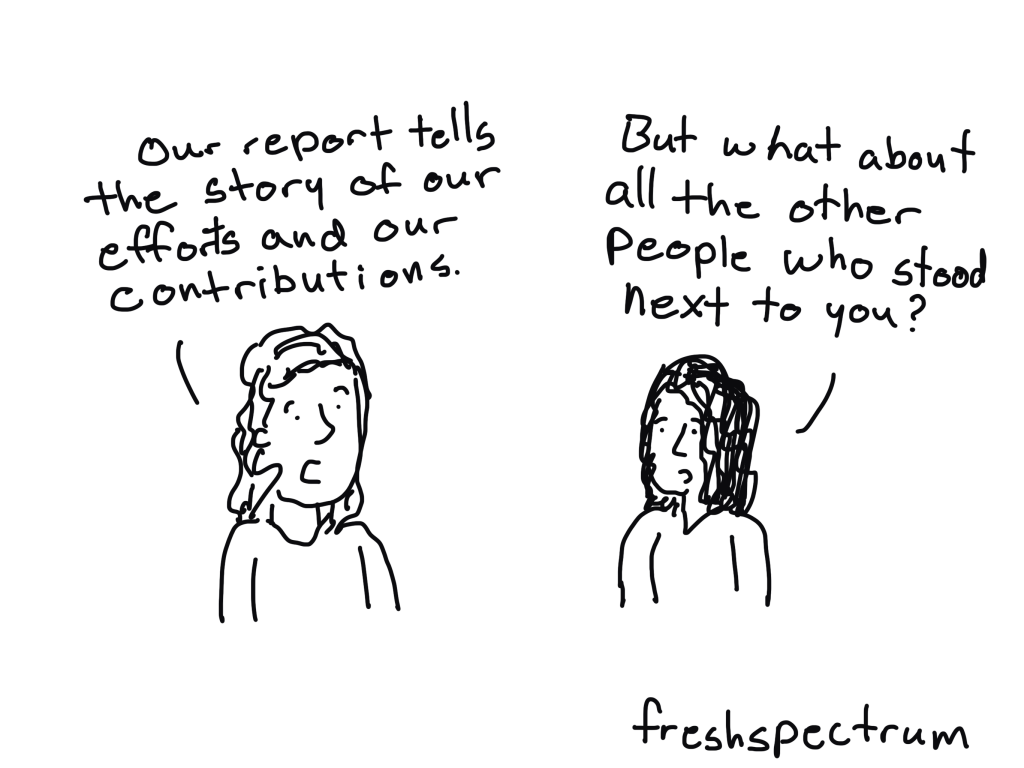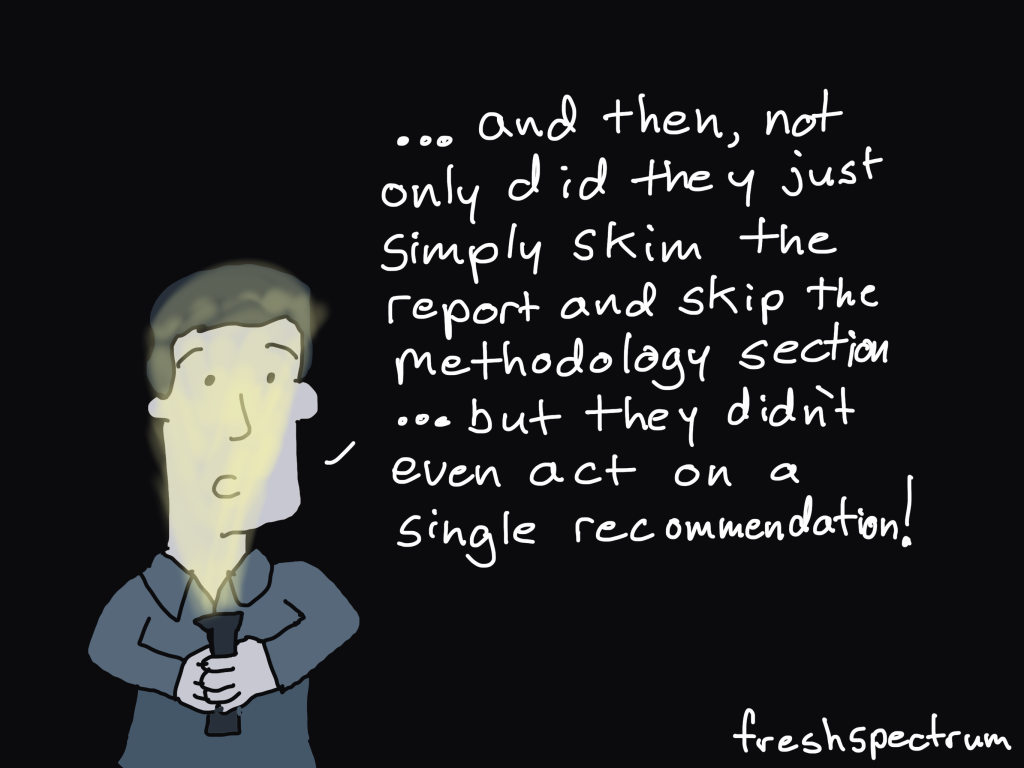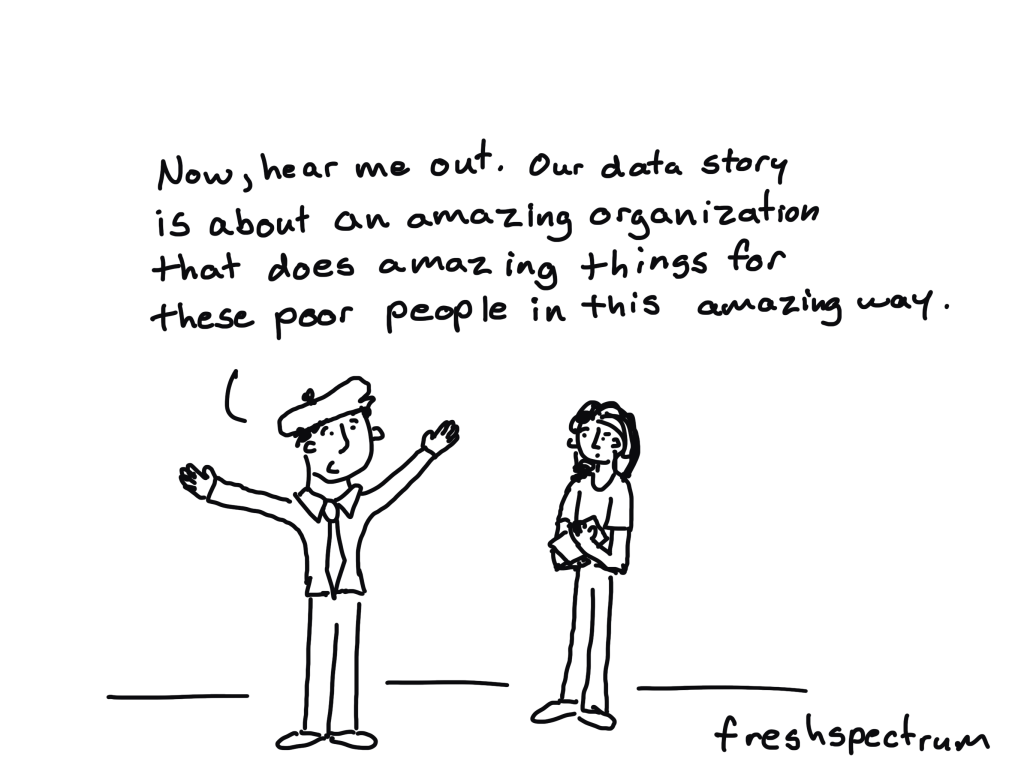This is an Eval Central archive copy, find the original at freshspectrum.com.
When I started drawing comics, back in the early 2010s, there were these really popular animations put together by the Royalty Society of Arts (RSA) in London.
My comics have always been pretty simple in format. And early on, before I would even attempt to draw hands, they were even simpler. So often I would get this question about whether I would be able to create an RSA style video.
I definitely gave it a few tries. I created illustrated videos for a couple of book trailers and a few evaluation related projects (ex. What is Evaluation Impact, From Small to Big: How to Achieve Greater Impact). And while I have created a couple more in past years, for the most part I stopped.
I stopped animating partly because I don’t think I really have the skills or interest for the job. But I also kept running into a problem when discussing projects with potential clients. The problem is that you just can’t make a good video without a good story.

The big reason why RSA Animates were so popular.
RSA Animates took talks from brilliant presenters, and then added whiteboard illustration. By the time Ken Robinson’s RSA Animate was released, he had already delivered what is still one of the most popular TED talks of all time (Do Schools Kill Creativity?).
Was the animation good? Certainly. But the talk itself was great. You didn’t even need to watch the talk to find it compelling, you can just listen.
And that’s the thing about the RSA Animates. The animation is just the icing on the cake. If the presentation was lame, animation would not make it better. It would just be nice icing on a stale flavorless cake. But if you start with a good talk, you could then use animation to add value.
Data storytelling is no different.

Good storytelling requires good stories.
Before you can tell a good story, you need to find a good story.
Luckily, if you are reading this, you are probably a researcher, evaluator, or some other kind of data person. And story finding IS YOUR JOB.
- When you try to understand how a program works, you are searching for the program’s story.
- When you dive into a dataset looking for interesting survey findings, you are searching for interesting stories.
- When you attempt to answer most research questions, you are still just searching for stories.
We use stories to make sense of information. Whether they are qualitative stories we collect directly from people or stories assembled from sets of quantitative data, these stories give us a sense of how things work.
Unfortunately, these stories are not always interesting or worth sharing. You have to use your understanding of your audience to decide which of the stories you find are worth telling.

Just don’t be a story hoarder.
Researchers and evaluators are not the press. Telling the story publicly is not always the point of a funded project. But that doesn’t mean you just hold onto the stories you discover.
As a story finder I believe that you have a responsibility to tell the good stories.
Because if you don’t, who will?